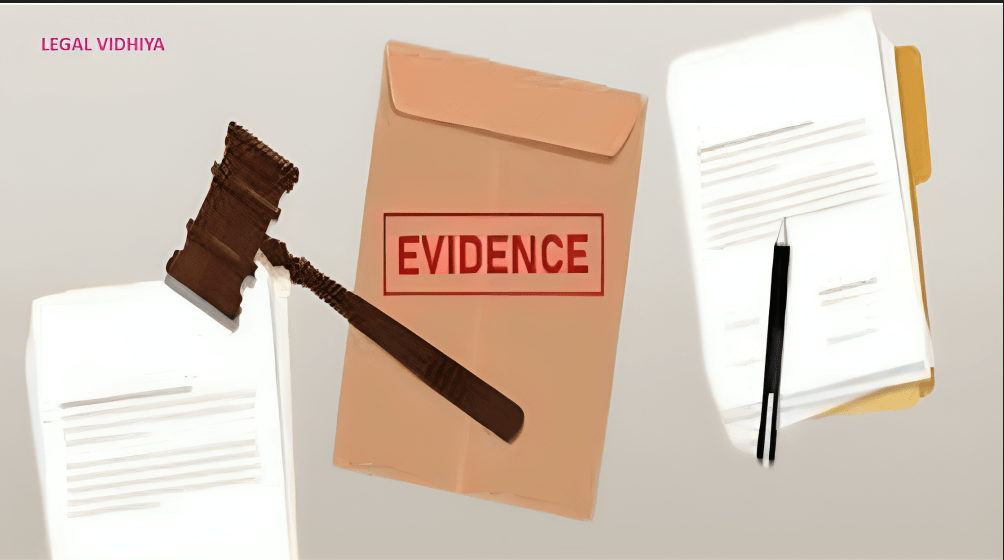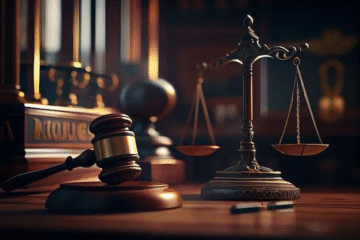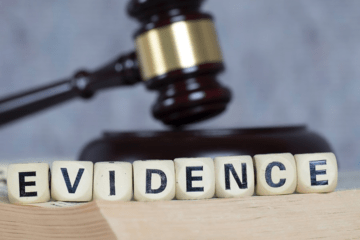
This article is written by Lahari Vennam KL University, Andhra Pradesh, an intern under Legal Vidhiya.
ABSTRACT
Laws are a collection of guidelines created by the government for citizens to follow and that also serve to control how they should behave. The majority of the time, governmental organizations enforce them. The legal system makes sure that everyone abides by the rules so that society may run smoothly and without any disruptions. The Indian Parliament creates the laws, which are then carried out by the executive branch and interpreted and upheld by the court.
In procedural law as well as substantive law, evidence is crucial. While substantive law regulates how the facts of the case should be handled and establishes the charge for the crime, procedural law specifies the process that the case must follow. In all court proceedings, substantive law specifies a person’s rights and how they should conduct in accordance with accepted societal norms. In order for a case to be decided and justice to be served, procedural as well as substantive law dictates the many aspects of the case where evidence is crucial to establishing the truth.
Keywords: Rights, Substantive, Procedural, Legislation, Claimed Fact, Investigation, Evidence, Investigation, Proceedings, Circumstances.
INTRODUCTION
Additional legal distinctions can be made between the two basic categories of substantive laws and procedural laws. They comprise the two main categories of law:
Legislative bodies pass statutory laws, which are known as substantive laws.
Contrarily, procedural laws are the procedures and norms that every court must follow in order to hear and decide cases.
‘Adjective laws’ is another name for procedural laws. It is impossible to draft procedural legislation without first passing substantive laws. Similar to how procedural rules are necessary for fair and correct application of substantive laws. Both rules are equally crucial, and one cannot be used successfully without the other.
What is Evidence?
In a court of law, evidence is crucial to prove a claimed fact. However, not all asserted facts that are regarded as evidence by the parties are necessarily admissible in court. Evidence is something that is used to support or refute an argument. Evidence is defined as “information used in court to prove something,” according to Oxford Learner’s Dictionary. Thus, the proof must be unambiguous.
The Indian Evidence Act of 1872 states that “Evidence” refers to all declarations made in court by witnesses regarding the facts being investigated. Documentary evidence includes both spoken comments like these and any documents made for the court’s consideration, including electronic recordings. However, it is important to distinguish between the ideas of evidence and the law of evidence.[1]
According to Stephen’s definition in the Stanford Encyclopaedia of Philosophy,
“Evidence” is defined as any remarks that witnesses are allowed or required to make in front of the court; these utterances are referred to as oral evidence.
All papers supplied for the Court’s review; these materials together are referred to as documentary evidence
The purpose of the legal system is to uphold justice by using the best evidence available to ascertain the truth.[2]
EVIDENCE AND PROCEDURAL LAW:
The part of law that controls the litigation process is known as procedural law.
Three pillars control the criminal and civil judicial process in India:
- IPC, or the Indian Penal Code of 1960
- The 1973 Code of Criminal Procedure and the 1908 Code of Civil Procedure
- The Indian Evidence Act
The CrPC or CPC in this case is a comprehensive procedural legislation for holding any trial in India. This procedure entails the gathering of evidence, questioning of the accused, etc. Anything can serve as a source of evidence, from interviewing witnesses to studying inanimate objects. Investigation falls within procedural law, where the value of the evidence is paramount. The evidence may also be digital. Evidence may be divided into three categories: oral, documentary, and actual. The testimony of witnesses can be used as spoken evidence in court. Documentary evidence includes any papers presented to a court of law for review. The actual evidence in legal procedures is provided by the items submitted in court.
To help the court make the best decision possible and depending on the complexity of the case, all three pieces of evidence may be presented. Additionally acceptable as evidence in court are emails, texts, mobile phone recordings, etc.
Evidence is used in legal proceedings to support or refute an assertion (the asserted fact). The Indian Evidence Act, 1872, which is one of the foundational pieces for carrying out trials, governs the creation of “evidence” in India. Section 60 of Part III[3] refers to oral evidence, whereas Section 3 of the IEA[4] refers to documentary evidence. After the act’s revision, the electronic records are also covered under this clause.
Although the Evidence Act specifically refers to the forms of evidence, Chapter XXIII Part A and Part B5 of the CrPC[5] deal with the manner of recording evidence and the Commission for the Examination of Witnesses. As part of the production of evidence before the court of law to show or deny, the statements made by the victim and accused throughout the hearing are of the highest importance. The term “evidence” refers to materials pertaining to the topic of a proceeding, including as written statements, audio/video recordings, pictures, any sort of digital media, etc. As a result, both in court proceedings and during trials, evidence is crucial.
EVIDENCE AND SUBSTANTIVE LAW:
Following the trial, the case’s merits are established and the dispute is resolved using substantive law evidence. The substantive law establishes the case’s elements, or its essence. The grand jury decides whether to dismiss the case or bring charges after hearing the prosecution’s evidence and conducting its own inquiry. However, a person is presumed innocent unless proven guilty. The evidence against the suspect determines whether or not to press charges.
In the event that someone is charged with a crime, a court of law would require substantial proof before making a ruling. And only before or during a search for more evidence may an accused person be arrested.
Before filing charges in cases of murder, rape, etc., police consult with the Office of Public Prosecutor (OPP), but if there is insufficient proof, an investigation may drag on for longer. Keeping in mind the victim’s perspective, the decision to press charges is based on information gathered during an inquiry, the general good, and legal precepts.
The distinction between substantive and procedural rules was made explicit by the Supreme Court of India in the case of Commissioner of Wealth Tax, Meerut v. Sharvan Kumar Swarup and Sons (1994)[6].
According to the Court, procedural laws are those that specify how rights and obligations are to be exercised and enforced, respectively, whereas substantive laws fix duties and establish rights and responsibilities among and for real or artificial people.
Legal perspectives on Substantive Laws and Procedural Laws
Many legal experts have voiced their opinions on the difference between laws.
In his book “The Works of Jeremy Bentham,[7]“ published in 1843, the English philosopher, lawyer, and social reformer Jeremy Bentham originally used the words “substantive laws” and “adjective laws,” which refer to procedural regulations. However, he argued that procedural and substantive laws should coexist in jurisprudence, as one cannot survive without the support of the other.
John Austin, on the other hand, disagreed with this difference and took a wholly different approach to the law’s goal.
The British jurist Thomas Holland described “Substantive Law” as the laws that outline how the laws would help to preserve rights in his work “The Elements of Jurisprudence.” As opposed to this, procedural or adjectival laws offer means of promoting and defending rights.
According to legal scholar Salmond, it is impossible to pinpoint the “exact nature of distinction” of the laws. According to him, procedural laws are the laws of “actions” and regulate the litigation process, whereas the remaining laws are considered to be substantive law in his book “Jurisprudence.” He goes on to say that procedural laws deal with the means and tools used to achieve these ends, whereas substantive laws are concerned with the outcomes desired by the administration of justice.
Another school of law maintains that there isn’t even a difference between substantive and procedural legislation. In his book A Treatise on the Modern Law of Evidence, Charles Frederic Chamberlayne stated that the distinction between the rules is “artificial and illusory[8].” The disparities between the laws are referred to as an “alleged distinction” by Professor Cook in Substance and Procedure in the Conflict of Laws. He believed that there is a Gray region in addition to “substance” and “procedure.”
Meaning and Characteristics of Procedural and Substantive Law
The substantive laws and the procedural laws are two interconnected and interdependent sets of legal systems.
The fundamental laws that establish the regulations and establish the guiding precepts in any given sector are known as substantive laws. One example of substantive legislation in India is the Indian Penal Code (IPC), which lists many offenses and specifies the appropriate penalties.
The collection of processes to be followed in creating, implementing, and upholding substantive laws are known as procedural laws. The Code of Criminal Procedure (CrPC), for instance, outlines the procedures that must be followed in criminal cases in India.
Substantive Laws
Substantive laws specify both the offenses and punishments under criminal law as well as the rights and responsibilities under civil law. In instance, under the common law system, substantive laws are not codified in legislative acts but rather are applied or amended by precedent. These laws may also be passed through the initiative process. Substantive laws are the actual claims and defences that should be used in every specific litigation.
Nature of Substantive Law
- Laws that determine an individual’s rights, duties, and what they may or may not do are referred to as substantive laws.
- These statutes have the authority to determine any matter independently.
- The legal environment of every crime, including how the case will be handled and what exact consequences will be meted out for any offense, is determined by substantive laws.
- Substantive laws in the common law system are statutes or precedents.
- Legal relationships between people or between an individual and the State are the subject of substantive laws.
The Supreme Court determined that substantive laws are a collection of regulations that “creates, defines, and regulates rights and liabilities” in the case of Thirumalai Chemicals Ltd. v. Union of India and others (2011)[9]. Alternatively, procedural laws create “a mechanism for determining those rights and liabilities and a machinery for enforcing them”.
Legislative Sources
Typically, the Substantive Laws are drawn from:
1. The already-existing, codified concepts of common law found in statutory legislation
2.Constitution
3. Legal precedents in situations with comparable facts and circumstances.
Examples
In India, some instances and purposes of substantive civil laws include:
The Indian Contract Act, 1872, for example, stipulates the key parts and circumstances necessary to engage into any contract. The Sales of Goods Act of 1930 for the selling of goods and the Partnership Act of 1932 for the establishment and registration of partnership enterprises and businesses are also included in the larger category of laws relating to contracts.
The Indian Succession Act, 1925 is a piece of legislation that addresses the fundamental rules of testamentary and intestate succession as they apply to Indian citizens who practice any kind of Christianity., and others are further significant civil laws in India.
Any private wrong done to anyone or “Tort” are likewise included in substantive civil laws. Another illustration of a substantive civil law is the Law of Torts. However, unlike its English equivalent, Indian tort law has developed through time and is not codified.
Substantive Criminal Law
Criminal offenses and the penalties that should be given for them are covered by substantive criminal laws.
Once a defendant breaks a criminal law, a criminal case is launched. The fundamental goal of substantive criminal laws is to punish the guilty party, albeit depending on the circumstances, compensation may also be given to the victim.
The court determines whether or not the accused is guilty and, if so, what should be the consequences for the criminal offense using substantive criminal laws.
Limitations
- Sometimes, substantive legal provisions prevent people from getting justice. Justice may be hampered by some substantive law provisions that are unfavourable to a particular plaintiff.
- Any person’s authority and freedom can be limited and restricted by substantive laws.
- The court is obligated to uphold the State’s unrestricted and unlimited ability to enact laws that conform to its own desire.
For instance, in the case of Supreme Court Advocates-on-Record Association and another v. Union of India (2016), the Supreme Court of India invalidated the Constitution (Ninety-Ninth Amendment) Act, 2014, which replaced the traditional collegium system of judicial appointment with the National Judicial Appointment Commission (NJAC).[10]
To guarantee the most effective allocation of judicial resources, procedural laws are created. All procedural laws are created in accordance with the legal requirements. A court cannot impose a civil or criminal penalty on someone who hasn’t been given notice of the case being brought against them or who hasn’t had a fair chance to defend themselves. To ensure that every judicial action is as fair as possible, the procedural laws must be uniform in how cases are filed, parties are notified, evidence is presented, and the facts are established.
Nature of Procedural Laws
Procedural laws specify the means and procedures by which substantive laws may be put into effect.
They lack the power to decide independently on any issue.
These laws are utilized in the legal system, which on occasion may be applied in situations that are not lawful, such as the handling of any cases or the filing of any lawsuits.
Acts of Parliament or the executive branch of government are used to carry out these laws.
Procedural laws specify methods and means for enforcing rights, as well as remedies for their infringement and the procedures used in each lawsuit.
Always come a procedural law after a substantive legislation. Farookh Mohammed v. the State of Madhya Pradesh (2015) was decided by the Madhya Pradesh High Court. In the case of Gurudwara Bei Sehjal v. Nanhku and Others (2022)[11], the Himachal Pradesh High Court decided that procedural law should not typically be regarded as “mandatory.”
Origin of Procedural Laws
Laws governing procedure are crucial to the administration of justice. They serve as the method through which substantive laws ought to be put into practice.
The Constitution is the main source for procedural legislation. A few further sources for procedural legislation are:
Legislatively passed statutes; written policies for officers of various law enforcement agencies. Although these rules are not laws, breaking them results in internal consequences.
The Supreme Court has established several principles for legal procedure, norms, and case judgements.
Types of Procedural Laws
The procedural laws vary amongst legal systems.
Some procedural laws could focus on finding the truth or fairness between the parties, while others may aim for a prompt resolution of disputes. The correct and complete application of legal concepts may also be a component of other procedural legislation. The tools of enforcing procedural laws are substantive laws. As a result, there are several categories of procedural laws based on the traits of substantive laws.
Based on them, there are mainly two categories of procedural laws:
- Laws of civil procedure or laws governing civil procedure, and
- laws of criminal procedure or laws governing criminal procedure.
According to Section 3 of the Evidence Act of 1872, “evidence” includes the following: a) All statements made in court by witnesses regarding the facts being investigated are referred to as oral evidence;
b) all papers [including electronic records] submitted for the court’s review are referred to as documentary evidence.
Laws of Criminal Process or Criminal Procedure Laws
All three forms of evidence may be offered in court, depending on the nature of the case and the need to get the proper verdict. Among other things, evidence from emails, texts, and mobile phone recordings are admissible in court. The use of evidence in court to prove or refute a fact (the contested fact) is governed by the Indian Evidence Act, 1872.Although the Evidence Act deals directly with the types of evidence, the CrPC also discusses the way in which evidence is recorded and the Commission responsible for witness examination. The victim’s and accused’s statements are crucial in the production of evidence in front of the court of law to prove or refute during the procedures.
Due to the fact that it establishes the guidelines for the admission, applicability, and sufficiency of evidence in court proceedings, the law of evidence is directly tied to substantive laws. In other words, the law of evidence establishes what kinds of evidence are acceptable in a court of law for use in proving or refuting legal claims.
Contrarily, substantive laws are the legal guidelines that specify and govern the privileges and immunities of people and institutions within a society. Wide-ranging legal topics including contract law, property law, criminal law, and torts are all covered by substantive laws.[12]
CONCLUSION
It is challenging to hold a trial and make a decision without proof. It is difficult to establish the veracity of the disputed claim or problem or to establish the guilt or innocence of the accused. Therefore, evidence is crucial to every phase of a trial, including, let’s say, the decision of the case. In procedural law, the evidence is utilized for things like document inspection, electronic evidence preservation, etc. In substantive law, the accusations against the suspect are made using the evidence. While a trial is taking place in court, evidence can potentially be altered. In order to do that, the prosecution must explain it to the court, and occasionally, such evidence may also be disregarded.
Laws that are both substantive and procedural are crucial to the administration of justice. The rights and duties of an individual toward others and the state are covered by substantive laws. The goals and subjects of legal disputes are likewise covered by these statutes. On the other hand, procedural laws regulate and control the course of every individual case’s litigation. The substantive and procedural laws work best when combined. Procedural law outlines how laws should be applied, whereas substantive law explains the fundamental principles and guidelines governing the application of the law. The Hon’ble Supreme Court correctly said that “a procedural legislation is always subordinate to the substantive law, and this has been established in several decisions.
[1] https://blog.ipleaders.in/substantive-laws-and-procedural-laws/ last seen on 18/08/2023.
[2] https://lexpeeps.in/the-relation-of-proof-with-procedures-and-theories/ last seen on 17/02/2023.
[3] S. 60, Indian Evidence Act, 1872.
[4] S. 3, Indian Evidence Act, 1872.
[5] Chapter XXIII Part A and Part B5, Code of Criminal Procedure Code, 1973.
[6] Commissioner Of Wealth Tax vs Sharvan Kumar Swarup & Sons1995,1994 Supp 3 SCR 750.
[7] The Works of Jeremy Bentham written in 1797–8.
[8] https://blog.ipleaders.in/substantive-laws-and-procedural-laws/ last seen on 18/08/2023.
[9] Thirumalai Chemicals Ltd. v. Union of India and others 11 April, 2011
[10] https://www.studocu.com/in/document/vivekananda-institute-of-professional-studies/evidence-law/evidence-substantive-and-procedural-law-evidence-act-part-1/40216840 last seen 19/08/2023.
[11] Gurudwara Bei Sehjal vs Nanhku and Others (4) SCC 21 March, 2022
[12]https://brainly.in/question/56198837#:~:text=For%20instance%2C%20in%20a%20criminal,a%20particular%20act%20was%20committed last seen on 19/08/2023.




0 Comments